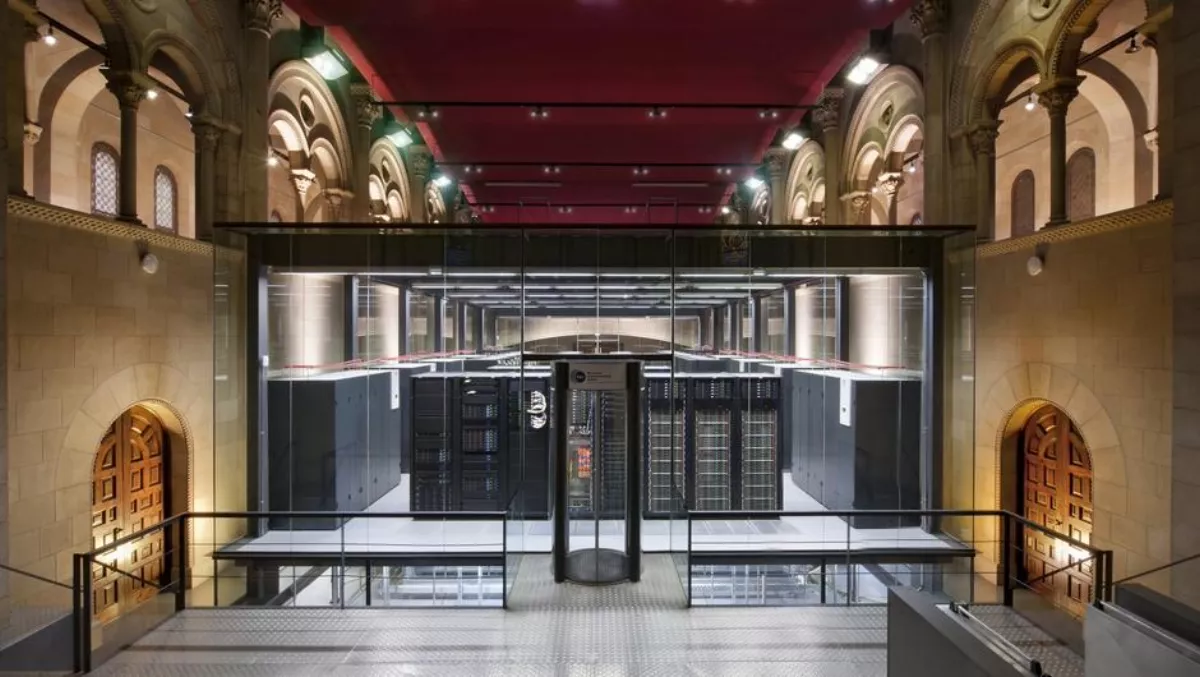
Inside MareNostrum, the most beautiful data center in the world
Up a side street on the edge of Barcelona, a stone path weaves through a park of old trees and wildflowers to the steps of the Torre Girona Chapel.
Sitting on the campus of the Polytechnic University of Catalonia, the chapel houses the Barcelona Supercomputing Center, the most beautiful data center in the world.
 The church was deconsecrated in the 1970s with the first MareNostrum system installed in 2004 with a calculation capacity of 42.35 teraflops/second.
The church was deconsecrated in the 1970s with the first MareNostrum system installed in 2004 with a calculation capacity of 42.35 teraflops/second.
To compare that to today, MareNostrum 4 sits inside a glass box in the middle of the church holding over 3400 Lenovo ThinkSystem servers built on Intel Xeon scalable processors interconnected by 60 kilometers of high-speed, Intel Omni-Path Technology 100 Gb/s network cabling.
Each processor can perform over 2 trillion calculations per second, giving the data center a 13.7 petaflop capacity. That's twelve times more powerful than MareNostrum 3.

Lenovo's Data Center Group chief technology officer Joao Almeida led the group through the church.
"The customer who had their data center inside the church looked at the servers, that were all black, and asked, 'Can you actually put some cables at the front so it's more aesthetically pleasing?' So that's what we did, we put the cables on the front so customers can have some colour there," Almeida says.

However, it wasn't the incredible power of these systems that I was most taken aback by.
Inside the church, sun lights up the stained-glass windows that are in the ceiling high above us, while the sound of church choir music echoes through the building's halls.
It's cold, quite dark, and besides the faint music that drones in and out of receptiveness, from outside the glass box, it's quiet.
Aesthetically, the Barcelona Supercomputing Center is like nothing else.
This is the hub of Lenovo's supercomputing work, which is supporting the data used by scientists, physicists, doctors and researchers that are tackling some of humanity's challenges.
Kirk Skaugen, president of Lenovo Data Center Group, says Lenovo's goal is to be the largest supercomputing company on earth that helps to solve some of the world's biggest challenges through the rapid advancement of technology and innovation.
The center supports research across a range of fields, from studying the impacts of climate change, tackling the challenges faced by the renewable energy sector and working to better understand cancer to innovations in cognitive computing and big data.
In addition, Lenovo also has three Innovation Centers dotted around the world. At these centers, customers can experience the same systems and technologies that are powering BSC MareNostrum 4.
An example of this is the University of Birmingham who has built a centerpiece research facility called Birmingham Environment for Academic Research (BEAR).
BEAR is a collection of IT resources provided without cost to the University community and qualified external scientists, enabling the acceleration of their research across a variety of disciplines such as life sciences including genome sequencing, medical and linguistic research.
Professor of Microbial Genomics and Bioinformatics at the University of Birmingham, Nick Loman, says genome sequencing can generate rapid insights into the scale and patterns-of-spread of important epidemics.
"When Zika struck the Americas, we were able to respond rapidly by deploying portable sequencing to affected areas, generating sequence data in days."
"Comparative genome sequence analysis requires significant computation and storage requirements. The new system provides rapid, on-demand computation to speed up the analysis. We can instantly access hundreds of CPUs, thousands of gigabytes of RAM and tens of terabytes of storage."
"This means we can keep pace with the rapid data generation, and quickly release important new findings to the scientific and public health community in order to assist epidemic response efforts.

